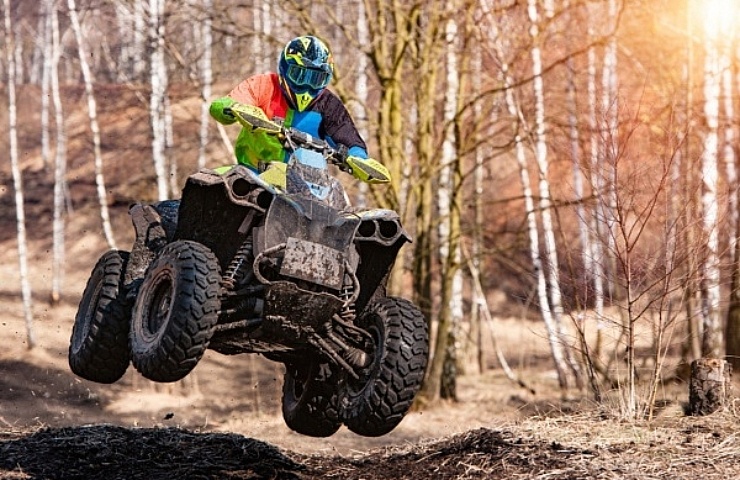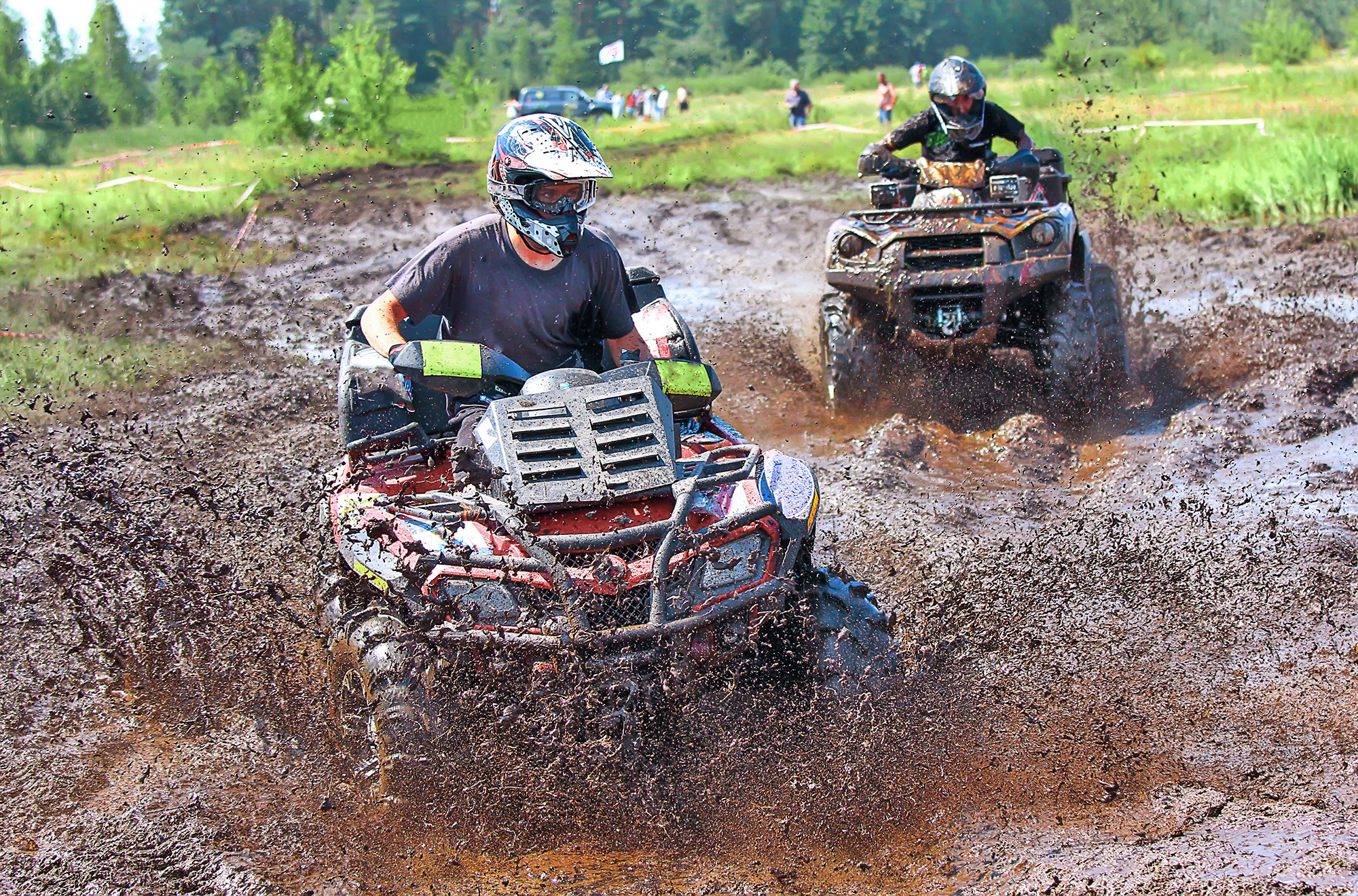Contents
Characteristics of an ATV
- Four wheels (formerly three and sometimes six)
- Rider straddles a seat
- Handlebar controls
- Low-pressure tires
ATVs come in several forms, such as sport, utility, and youth models.
- Sport – Lightweight, aggressive, sport-oriented ATVs built for competition with advanced suspension and handling capabilities for everything from off-road to motocross.
- Utility – Utility ATVs are built for work, including towing and hauling materials, and can reach remote areas that full-size vehicles can’t.
- Youth – Youth ATVs are designed with kids’ sizing in mind and a low center of gravity.
Leading manufacturers include Honda, Kawasaki, Yamaha, Can-Am, Polaris, Kymco, CF Moto, Hisun, and Kayo.
Shop now for ATVsATV History
If any one person can be credited for the advent of the ATV, it would be John Plessinger. In 1967, Plessinger was a student at the Cranbrook Academy of Arts and Science, where he took on a project to create a motorized tricycle capable of traversing all terrain. His “Project Tricart” not only earned him an A, but was picked up by a company named Sperry Rand. Production of the Sperry-Rand Tricart began in 1968, and it was one of the highest-volume ATVs ever made.
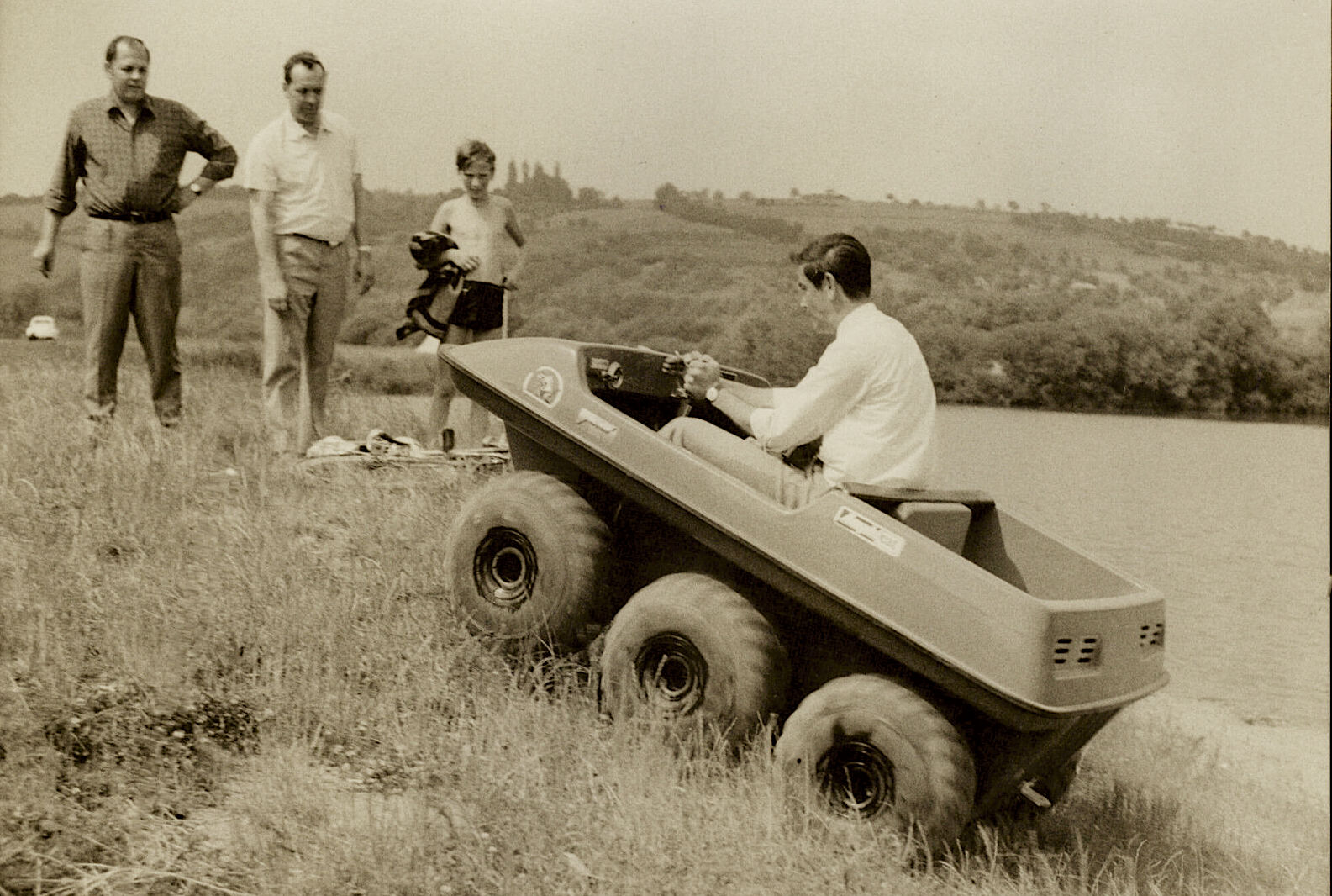
Vintage Amphicat
Other predecessors to the modern ATV include amphibious six-wheeled vehicles like the Jigger or the Amphicat from the late 1960s. These skid-steering 6×6 vehicles looked like boats with wheels and could go from land to water, earning them the original moniker of ATV. When the name shifted to mean landbound straddle-ridden vehicles, these became known as AATVs (amphibious all-terrain vehicles).

1985 Honda ATC250R
By 1969, Japanese manufacturers noticed the Tricart’s success. Honda introduced its first ATV to America in 1970, and in the early ‘70s, Kawasaki and Yamaha joined the trend.
In 1984, manufacturers introduced four-wheel versions of the ATV, which soon dominated sales. The sale of three wheelers ended in 1988 after the US Consumer Product Safety Commission reported safety issues with the three-wheel design. From that point, all ATVs had at least four wheels, prompting the name “quads.”
How Do People Use ATVs?
ATVs are put into action everywhere, from racetracks to ranches. If they’re not under full camouflage, you might see them outdoors, providing hunters and anglers a way into the deep wilderness. You might also find them towing a load or soaring overhead on a motocross track.
Minimal onboard amenities help competition ATVs maintain their light weight and agile handling. You will find quick-revving power and sport-tuned suspension, plus a roomy cockpit so that the rider can use their weight to counterbalance the machine. This is how racers optimize the handling to whip through turns, loft over jumps, and weave through trees.
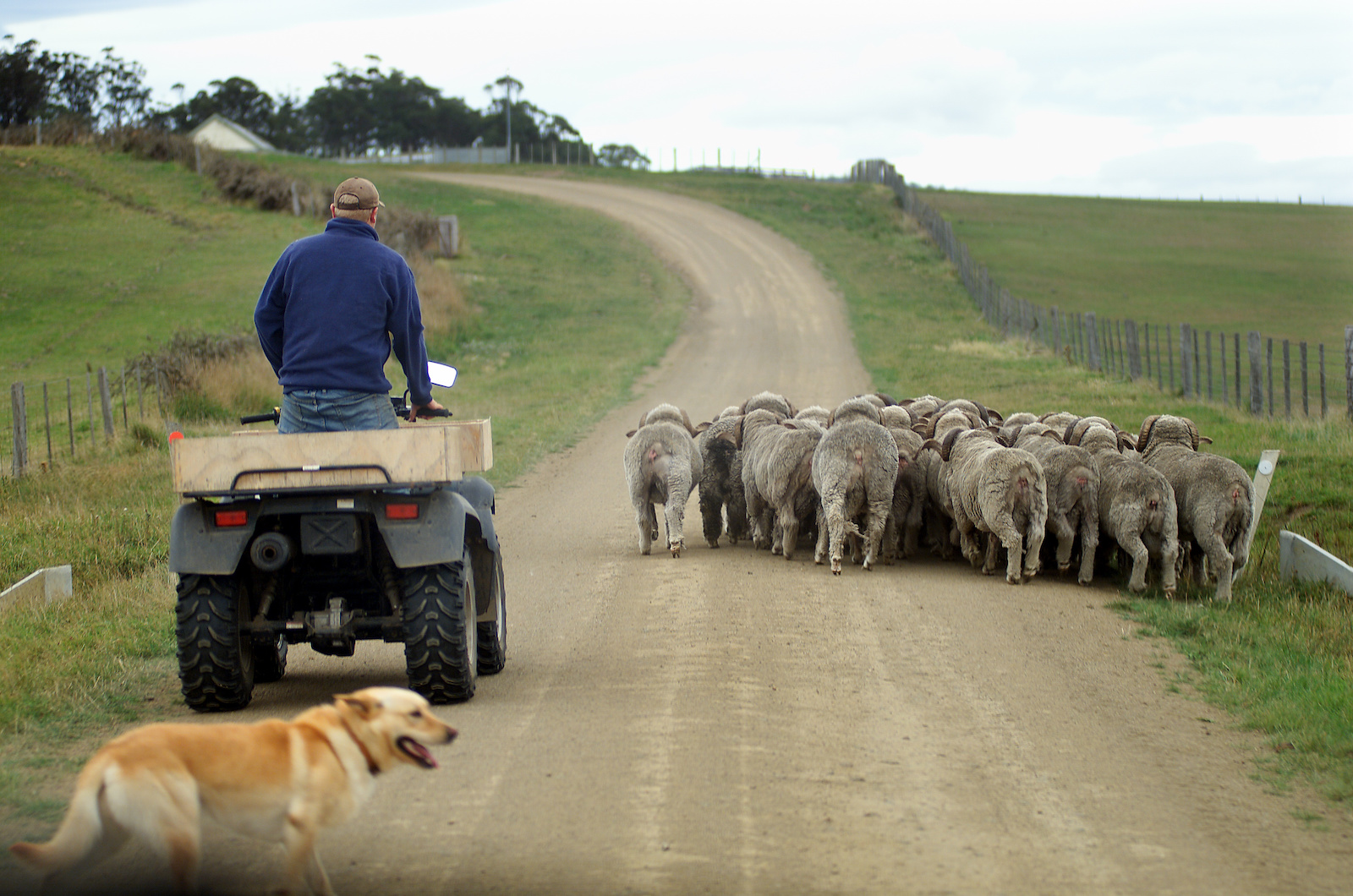
Herding sheep with an ATV
Utility ATVs are ideal for providing transportation on large properties such as ranches, farms, and campuses. Utility ATVs make it easy to get through varied terrain. With large tires and low air pressure, an ATV can maintain a large purchase on the ground beneath without disturbing the landscape.
Many utility ATVs can tow and haul cargo in their front and rear racks, which can also be used to mount accessories. They are adept at transporting hunting, fishing, and camping equipment into the wilderness, with room left to haul out the yield. They often include amenities such as headlights, sockets for powering electronics, and comfortable seats that sometimes even have backrests, making them more favorable for all-day use.
Top speed isn’t necessarily the strong point of a utility ATV. Still, features like selectable four-wheel drive, automatic continuously variable transmission (CVT)—and options like electronic power steering—give utility ATVs a wide range of capabilities.
Youth ATVs are made with youth sizing in mind and proportionate power, beginning at 50cc. Youth models usually come with additional safety equipment, including adjustable throttle limiters, keyed ignitions so no unauthorized riding takes place, rider tethers that kill the engine when pulled, and parental control electronics.
Popular ATV Models
When considering an ATV, the first question is, how will you use this vehicle? Top speed might not be as crucial as hauling capability. Will you be in sand, snow, or mud? Are you competing or riding only for fun? Does it need to perform a task? All of these questions matter when selecting the right ATV.
You’ll also want to consider how you’ll transport this ATV to the area where you intend to use it, if that’s not right outside your door:
- Will this ATV fit in your truck bed or inside your RV?
- Do you have ramps to get it in there?
- Where will you store it when it’s not in use?
Yamaha Banshee
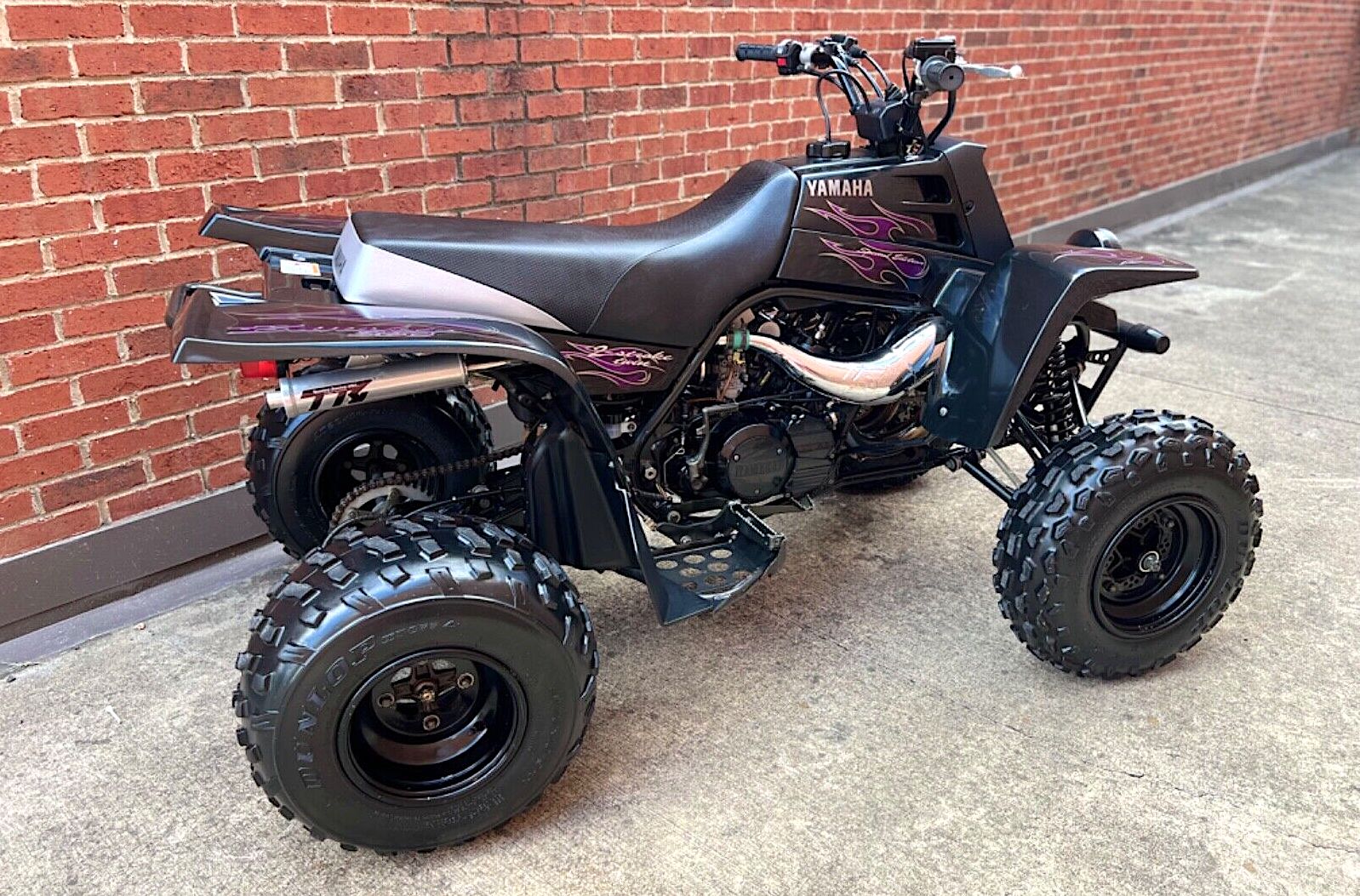
2006 Yamaha Banshee Special Edition
ATV diehards need no introduction to this revered model. Yamaha’s mighty 350cc two-stroke twin-cylinder Banshee ruled the dunes in the 1990s. EPA emissions regulations caused Yamaha to stop selling the Banshee in the US in 2006, though it remains one of the most sought-after ATVs in today’s used market.
Kawasaki KFX50
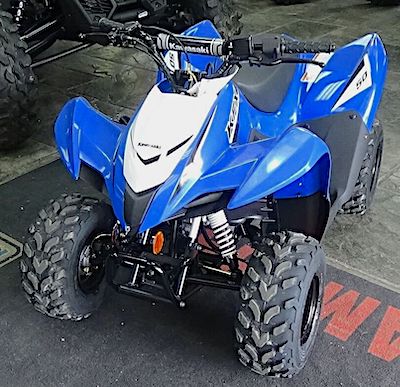
2023 Kawasaki VFX 50
Many find the best place for young riders to get started ]is with a Kawasaki KFX. Built to help kids hone their riding skills, the smooth, predictable power and comfortable ergonomics inspire confidence. Keyed ignition and an adjustable throttle limiter help parents stay in control as skills develop.
Polaris Sportsman 850
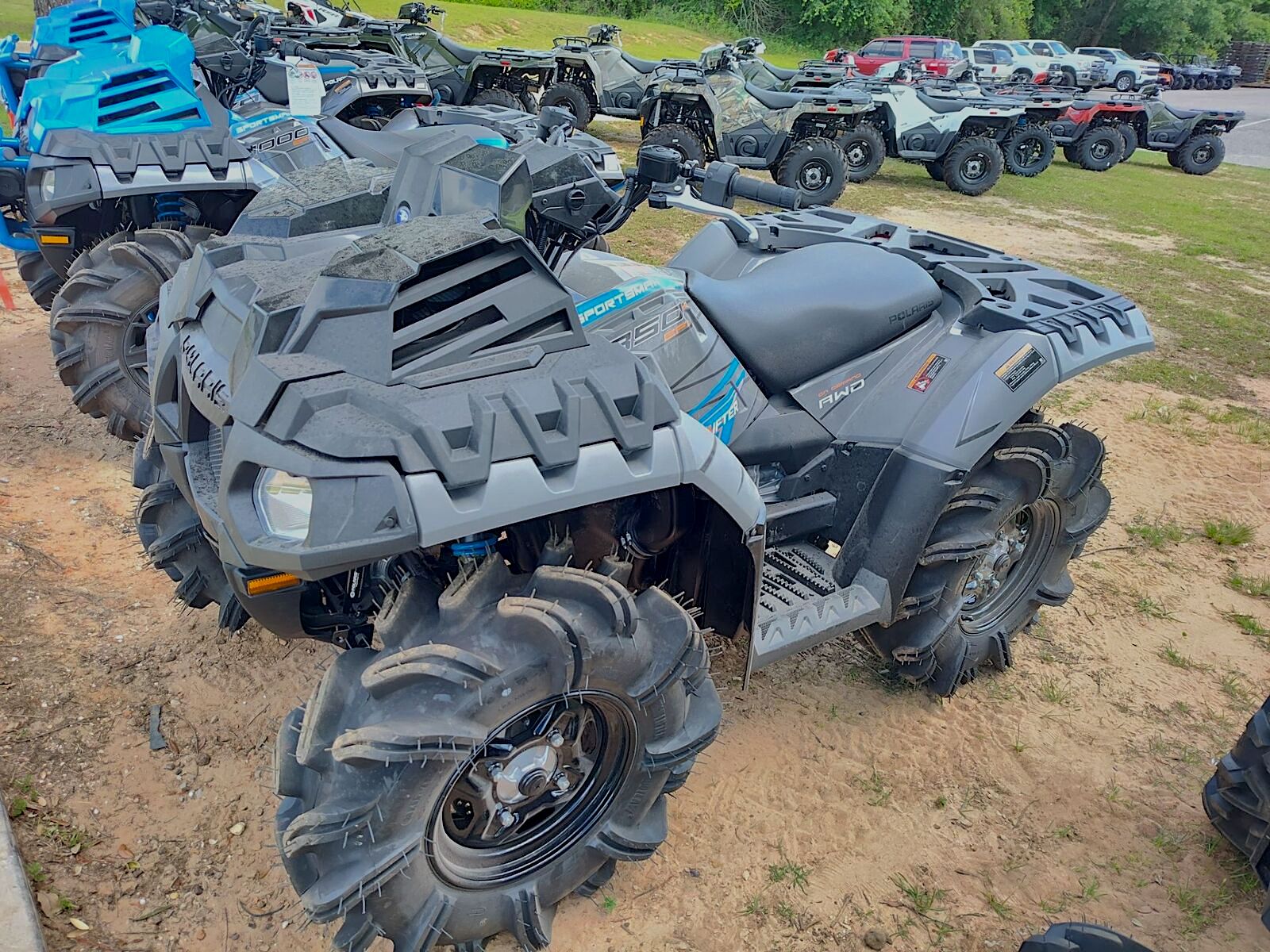
2023 Polaris Sportsman 850 High Lifter
Whether on the ranch or braving the outdoors, the Polaris Sportsman 850 is an excellent example of a capable companion. The 78-horsepower 850cc twin-cylinder engine with all-wheel drive and four-wheel A-arm suspension embodies rugged capability. Outfitted with front and rear racks, bumpers, a hitch receiver, and a 3,500-lb. winch, ATVs like this are ready to take on your toughest tasks on the homestead and wildest outdoor adventures.
Shop now for ATVs
